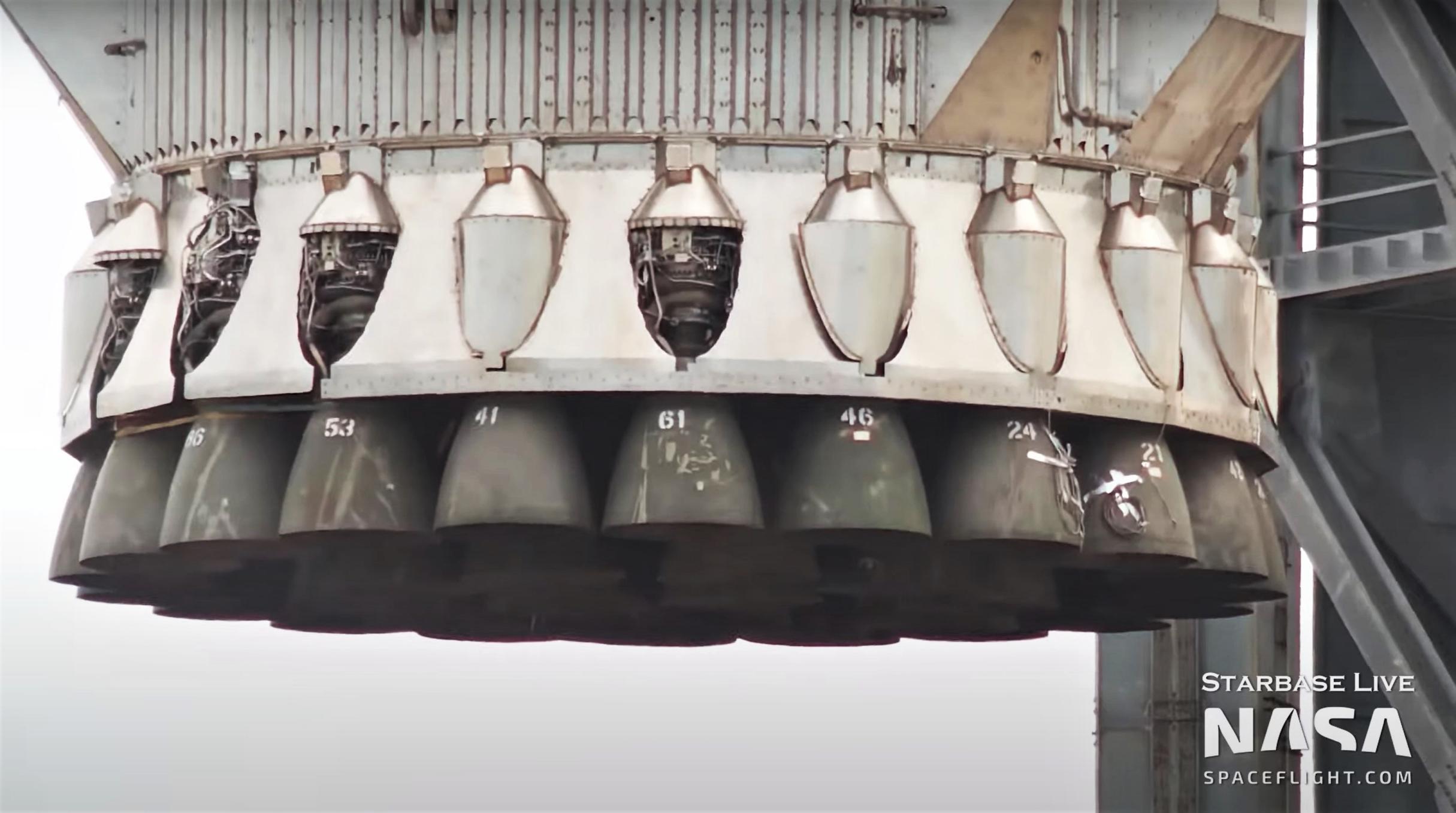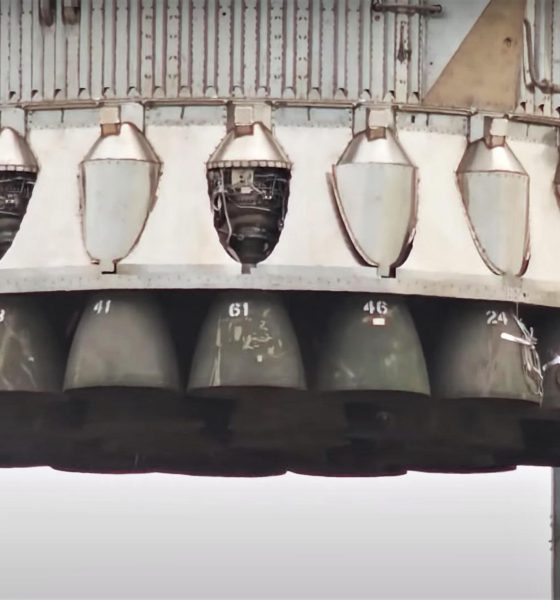SpaceX has returned an upgraded Super Heavy booster to the factory after an unexpected explosion and fireball caused “minor” damage during testing.
CEO Elon Musk first revealed that the company would need to remove the rocket from Starbase’s orbital launch pad for inspections and repairs on July 13th, about a day and a half after the anomaly. On July 11th, during what may have been a partial wet dress rehearsal (WDR), a dispersed cloud of methane gas found an accidental ignition source and exploded with a force that at least one observer estimated was equivalent to several pounds of TNT. Several nail-biting hours of uncertainty followed, during which SpaceX attempted to empty Super Heavy Booster 7 of its propellant (and explosive potential) and regain control of the situation, while simultaneously trying to avoid stoking a fire that started at the pad.
With a heaping serving of luck, Booster 7 made it through the event (mostly) intact. Now SpaceX must take a close appraisal of the rocket and situation and decide how to proceed.
Musk, as always, has put his optimistic face forward on Twitter and in a direct response to Reuters. According to an email sent shortly after an early in-person post-anomaly inspection, Musk stated that Booster 7 could return “to the launch stand probably next week” – implying that any damage suffered was extremely minor. By the time Super Heavy was removed from the launch mount the next day (July 14th), however, it became clear that the situation wasn’t quite as optimal.
Instead, Booster 7’s aft engine section was clearly damaged, with some of the dozens of thermal protection panels enclosing 33 Raptor engines apparently torn off or knocked askew by the July 11th blast. Given the tight fit and relatively heavy-duty nature of some of those panels, deformation could easily damage some of the more sensitive plumbing and components on Raptor engines. The day prior, teams spent hours tearing out unexpectedly fragile components of Booster 7’s hidden aft heat shielding and even removed and replaced one of its Raptors in-situ.
More likely than not, all Raptor engines with minor damage can be repaired and reused on a future booster. The explosion may also give SpaceX invaluable data that can be used to improve the durability and performance of Raptor and Super Heavy’s heat shield. Nonetheless, a methodical inspection of Booster 7’s aft end could easily take a week or two. If more chronic damage is discovered or the whole aft heat shield or a large number of Raptors need to be removed and replaced, the hiatus could grow to a month or more.
Following Booster 7’s July 15th return to the Starbase factory, SpaceX appears to have begun removing more Raptor engines on July 17th, kicking off a phase that will hopefully be heavy on encouraging inspection results and light on substantial repairs. If it turns out that the Super Heavy prototype is mostly in great shape after such a violent anomaly, it would bode well for the rocket’s durability during future ground and flight testing. If it did not fare well, SpaceX may need to seriously reconsider whether Booster 7 is fit to support Starship’s orbital launch debut or even proceed into static fire testing.
Either way, SpaceX recently finished stacking Super Heavy Booster 8. If it’s made a priority, the newest prototype could be made ready to take over where Booster 7 left off within a few weeks. Alternatively, it could even join a repaired Booster 7 at the launch pad for basic proof testing while its predecessor attempts to restart its first static fire campaign. Simultaneously, Starship S24 is almost ready to begin its own static fire test campaign, guaranteeing an eventful and hardware-rich period at Starbase after several months of relative inaction.
SpaceX has 12-hour road closures likely meant for Ship 24 testing scheduled daily from Monday, July 18th to Thursday, July 21st.

Elon Musk
SpaceX’s Starship FL launch site will witness scenes once reserved for sci-fi films
A Starship that launches from the Florida site could touch down on the same site years later.
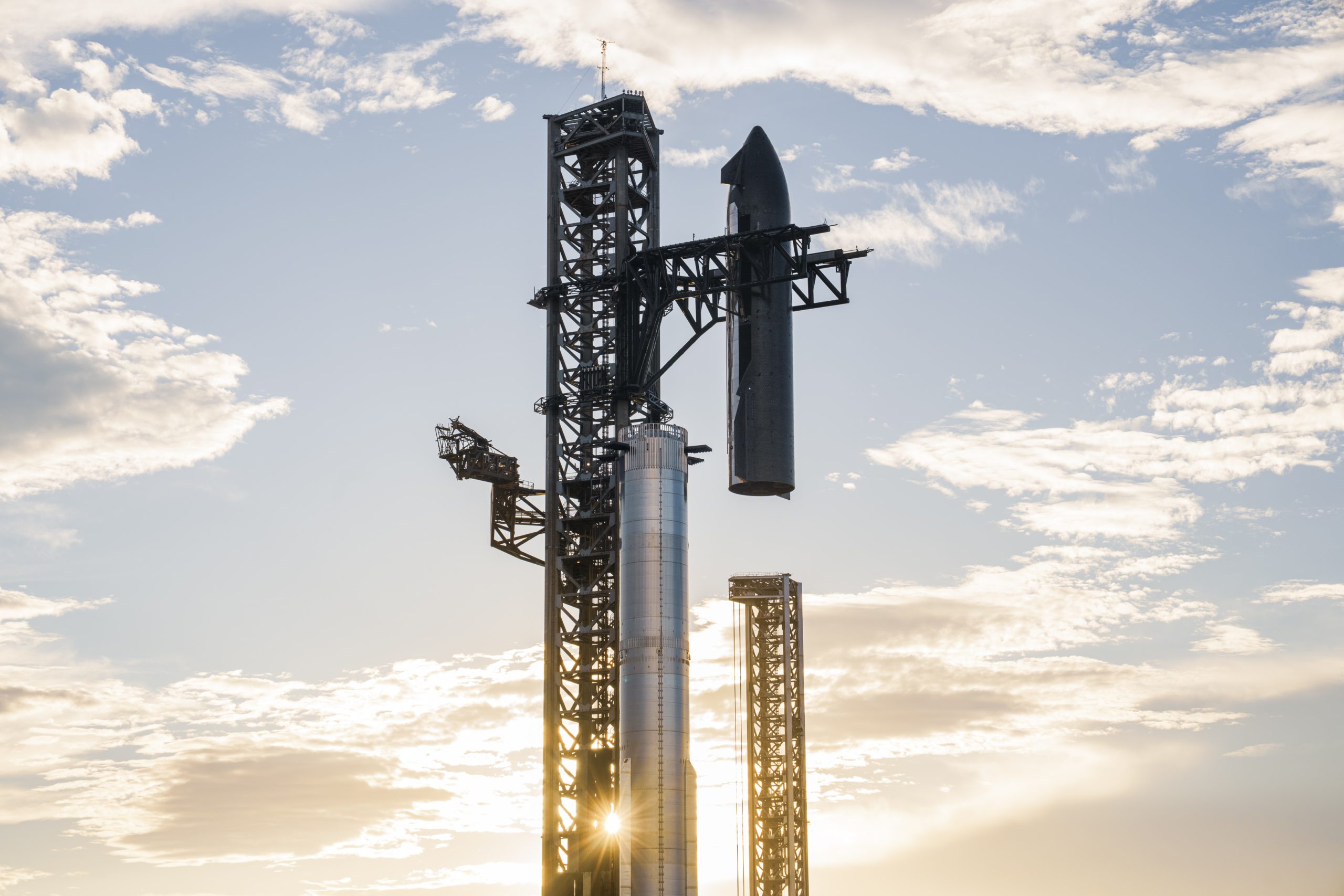
The Department of the Air Force (DAF) has released its Final Environmental Impact Statement for SpaceX’s efforts to launch and land Starship and its Super Heavy booster at Cape Canaveral Space Force Station’s SLC-37.
According to the Impact Statement, Starship could launch up to 76 times per year on the site, with Super Heavy boosters returning within minutes of liftoff and Starship upper stages landing back on the same pad in a timeframe that was once only possible in sci-fi movies.
Booster in Minutes, Ship in (possibly) years
The EIS explicitly referenced a never-before-seen operational concept: Super Heavy boosters will launch, reach orbit, and be caught by the tower chopsticks roughly seven minutes after liftoff. Meanwhile, the Starship upper stage will complete its mission, whether a short orbital test, lunar landing, or a multi-year Mars cargo run, and return to the exact same SLC-37 pad upon mission completion.
“The Super Heavy booster landings would occur within a few minutes of launch, while the Starship landings would occur upon completion of the Starship missions, which could last hours or years,” the EIS read.
This means a Starship that departs the Florida site in, say, 2027, could touch down on the same site in 2030 or later, right beside a brand-new stack preparing for its own journey, as noted in a Talk Of Titusville report. The 214-page document treats these multi-year round trips as standard procedure, effectively turning the location into one of the world’s first true interplanetary spaceports.
Noise and emissions flagged but deemed manageable
While the project received a clean bill of health overall, the EIS identified two areas requiring ongoing mitigation. Sonic booms from Super Heavy booster and Starship returns will cause significant community annoyance” particularly during nighttime operations, though structural damage is not expected. Nitrogen oxide emissions during launches will also exceed federal de minimis thresholds, prompting an adaptive management plan with real-time monitoring.
Other impacts, such as traffic, wildlife (including southeastern beach mouse and Florida scrub-jay), wetlands, and historic sites, were deemed manageable under existing permits and mitigation strategies. The Air Force is expected to issue its Record of Decision within weeks, followed by FAA concurrence, setting the stage for rapid redevelopment of the former site into a dual-tower Starship complex.
SpaceX Starship Environmental Impact Statement by Simon Alvarez
News
Tesla Full Self-Driving (FSD) testing gains major ground in Spain
Based on information posted by the Dirección General de Tráfico (DGT), it appears that Tesla is already busy testing FSD in the country.
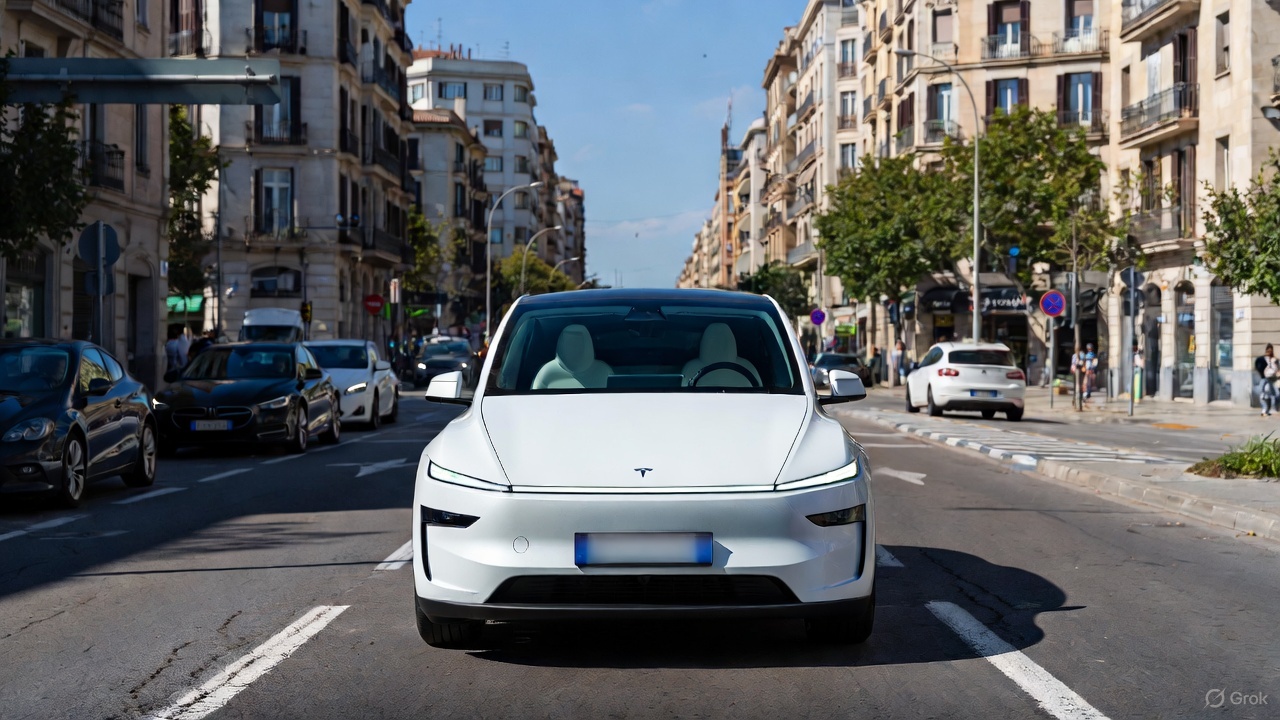
Tesla’s Full Self-Driving (Supervised) program is accelerating across Europe, with Spain emerging as a key testing hub under the country’s new ES-AV framework program.
Based on information posted by the Dirección General de Tráfico (DGT), it appears that Tesla is already busy testing FSD in the country.
Spain’s ES-AV framework
Spain’s DGT launched the ES-AV Program in July 2025 to standardize testing for automated vehicles from prototypes to pre-homologation stages. The DGT described the purpose of the program on its official website.
“The program is designed to complement and enhance oversight, regulation, research, and transparency efforts, as well as to support innovation and advancements in automotive technology and industry. This framework also aims to capitalize on the opportunity to position Spain as a pioneer and leader in automated vehicle technology, seeking to provide solutions that help overcome or alleviate certain shortcomings or negative externalities of the current transportation system,” the DGT wrote.
The program identifies three testing phases based on technological maturity and the scope of a company’s operations. Each phase has a set of minimum eligibility requirements, and applicants must indicate which phase they wish to participate in, at least based on their specific technological development.
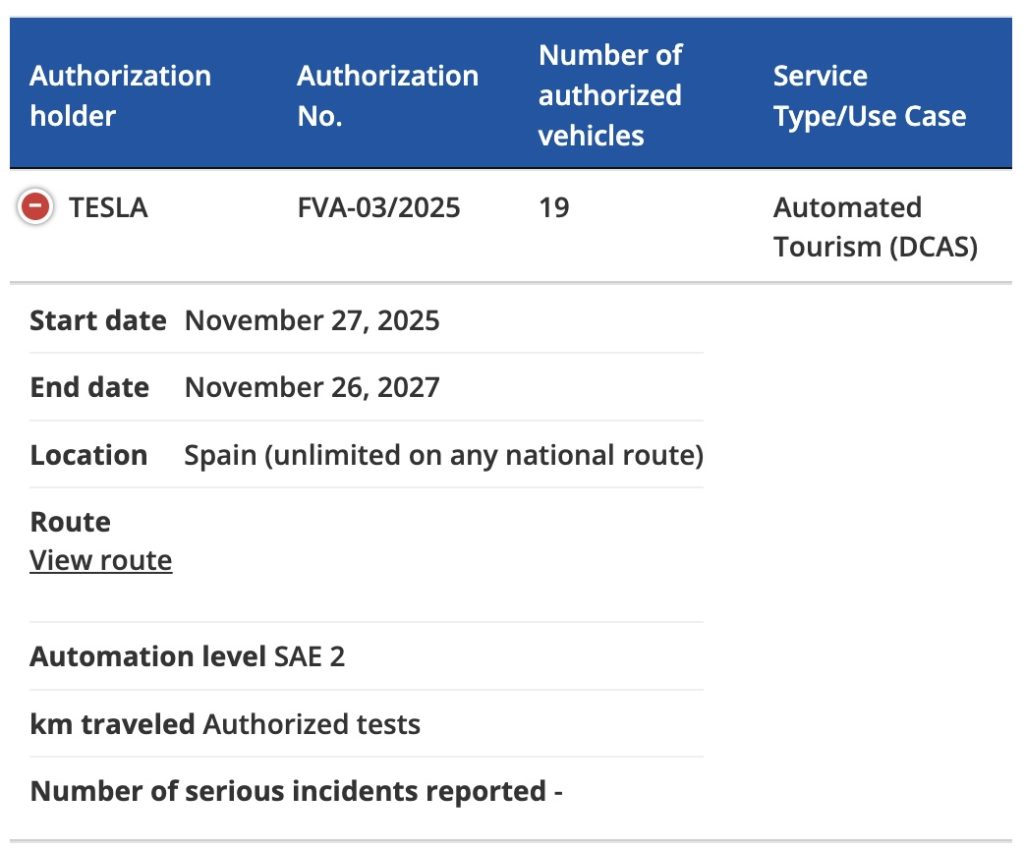
Tesla FSD tests
As noted by Tesla watcher Kees Roelandschap on X, the DGT’s new framework effectively gives the green flight for nationwide FSD testing. So far, Tesla Spain has a total of 19 vehicles authorized to test FSD on the country’s roads, though it would not be surprising if this fleet grows in the coming months.
The start date for the program is listed at November 27, 2025 to November 26, 2027. The DGT also noted that unlimited FSD tests could be done across Spain on any national route. And since Tesla is already in Phase 3 of the ES-AV Program, onboard safety operators are optional. Remote monitoring would also be allowed.
Tesla’s FSD tests in Spain could help the company gain a lot of real-world data on the country’s roads. Considering the scope of tests that are allowed for the electric vehicle maker, it seems like Spain would be one of the European countries that would be friendly to FSD’s operations. So far, Tesla’s FSD push in Europe is notable, with the company holding FSD demonstrations in Germany, France, and Italy. Tesla is also pushing for national approval in the Netherlands in early 2026.
News
Tesla FSD V14.2.1 is earning rave reviews from users in diverse conditions
Tesla’s Full Self-Driving (Supervised) software continues its rapid evolution, with the latest V14.2.1 update drawing widespread praise.

Tesla’s Full Self-Driving (Supervised) software continues its rapid evolution, with the latest V14.2.1 update drawing widespread praise for its smoother performance and smarter decision-making.
Videos and firsthand accounts from Tesla owners highlight V14.2.1 as an update that improves navigation responsiveness, sign recognition, and overall fluidity, among other things. Some drivers have even described it as “more alive than ever,” hinting at the system eventually feeling “sentient,” as Elon Musk has predicted.
FSD V14.2.1 first impressions
Early adopters are buzzing about how V14.2.1 feels less intrusive while staying vigilant. In a post shared on X, Tesla owner @LactoseLunatic described the update as a “huge leap forward,” adding that the system remains “incredibly assertive but still safe.”
Another Tesla driver, Devin Olsenn, who logged ~600 km on V14.2.1, reported no safety disengagements, with the car feeling “more alive than ever.” The Tesla owner noted that his wife now defaults to using FSD V14, as the system is already very smooth and refined.
Adverse weather and regulatory zones are testing grounds where V14.2.1 shines, at least according to testers in snow areas. Tesla watcher Sawyer Merritt shared a video of his first snowy drive on unplowed rural roads in New Hampshire, where FSD did great and erred on the side of caution. As per Merritt, FSD V14.2.1 was “extra cautious” but it performed well overall.
Sign recognition and freeway prowess
Sign recognition also seemed to show improvements with FSD V14.2.1. Longtime FSD tester Chuck Cook highlighted a clip from his upcoming first-impressions video, showcasing improved school zone behavior. “I think it read the signs better,” he observed, though in standard mode, it didn’t fully drop to 15 mph within the short timeframe. This nuance points to V14.2.1’s growing awareness of temporal rules, a step toward fewer false positives in dynamic environments.
FSD V14.2.1 also seems to excel in high-stress highway scenarios. Fellow FSD tester @BLKMDL3 posted a video of FSD V14.2.1 managing a multi-lane freeway closure due to a police chase-related accident. “Perfectly handles all lanes of the freeway merging into one,” the Tesla owner noted in his post on X.
FSD V14.2.1 was released on Thanksgiving, much to the pleasant surprise of Tesla owners. The update’s release notes are almost identical to the system’s previous iteration, save for one line item read, “Camera visibility can lead to increased attention monitoring sensitivity.”
